Animalz just turned 10.
In that time, we’ve built content strategies for hundreds of B2B SaaS companies at every stage — from pre-seed startups to public companies. Our content has helped companies 5x their organic traffic, generate millions in pipeline, and taken companies from zero organic traffic to industry leadership. And in that experience, we’ve developed frameworks that actually work.
These are our favorite frameworks we always keep going back to.
Consider them our anniversary gift to you.
1. Library vs. Publication
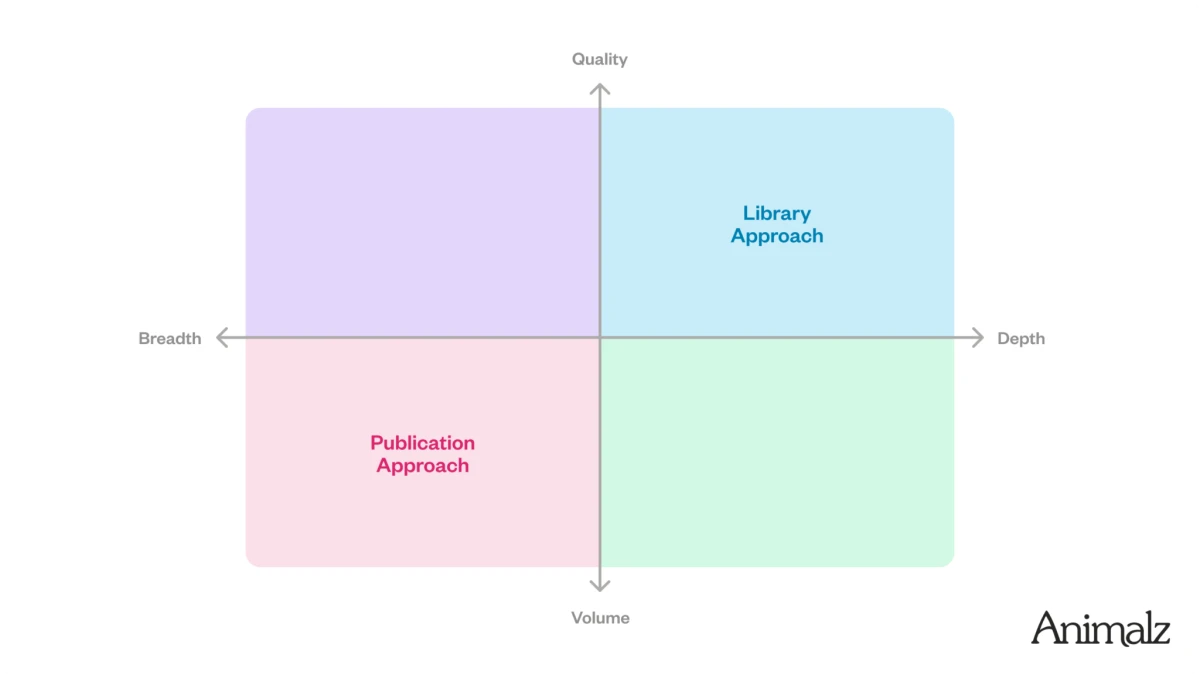
What it is: Library and publication are two strategic approaches to blog structure.
Under the content library framework, your blog is composed of and organized according to generally evergreen topics, much like the reference section of your local library.
The publication approach favors chronological and novelty-driven content, almost like a newsroom. “Publication” content has a shorter shelf life.
How it works: What approach you choose depends on your goals and resources. The library framework can be slow to drive results, but requires relatively fewer resources. Publication content tends to be resource-intensive.
In the first iteration of this framework, we recommended the library approach for almost everyone, but the content landscape has shifted. SEO reliance has become riskier as algorithms changed and AI increasingly takes over. Today, we believe there’s immense potential in audience-building through other channels like newsletters and social media.
For most clients, unless you have a significant budget, we suggest an 80/20 rule — 80% library, 20% publication. That is: 80% of your content is topics your audience can regularly reference. And the value compounds over time; the larger the body of work, the more recognized as an authority you are.
2. Hub and Spoke
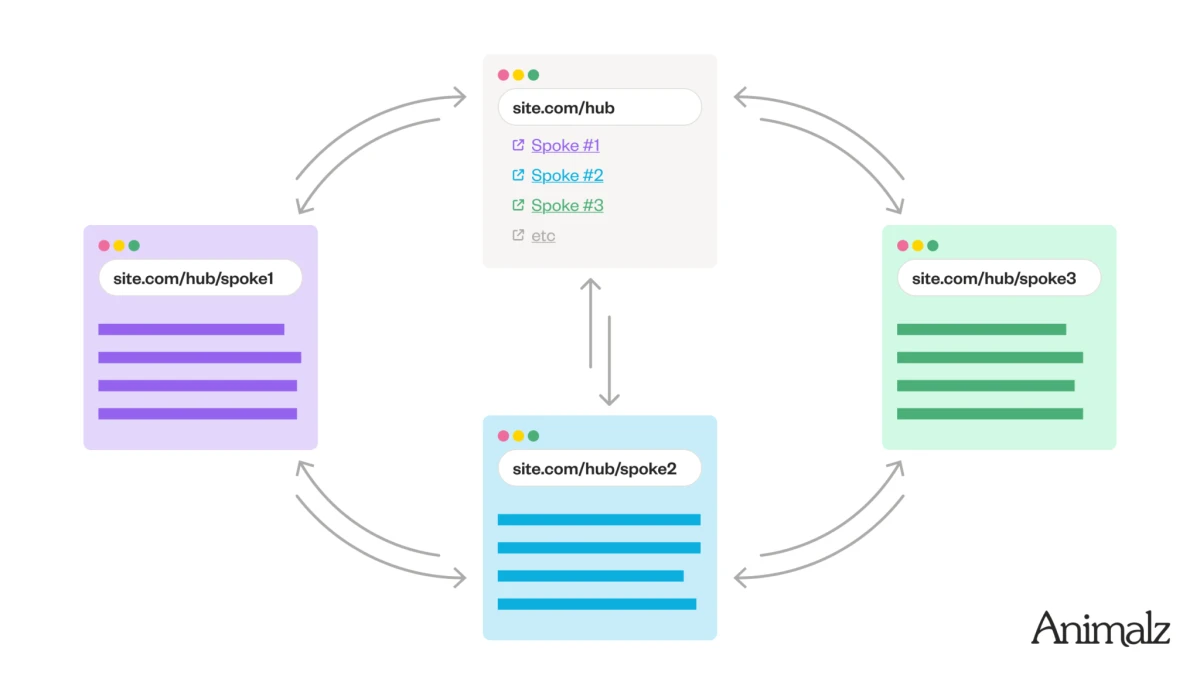
What it is: The hub and spoke framework is a strategic SEO approach for tackling competitive keywords by creating one central piece of content (the hub) supported by multiple subtopic-focused articles (the spokes).
How it works: Think of the hub as a comprehensive table of contents, linking out to each spoke, with each spoke also linking back to the hub and to one another. This interconnected structure helps readers easily navigate related content, extends read time, and signals strong topical authority to search engines.
3. Pillar Content
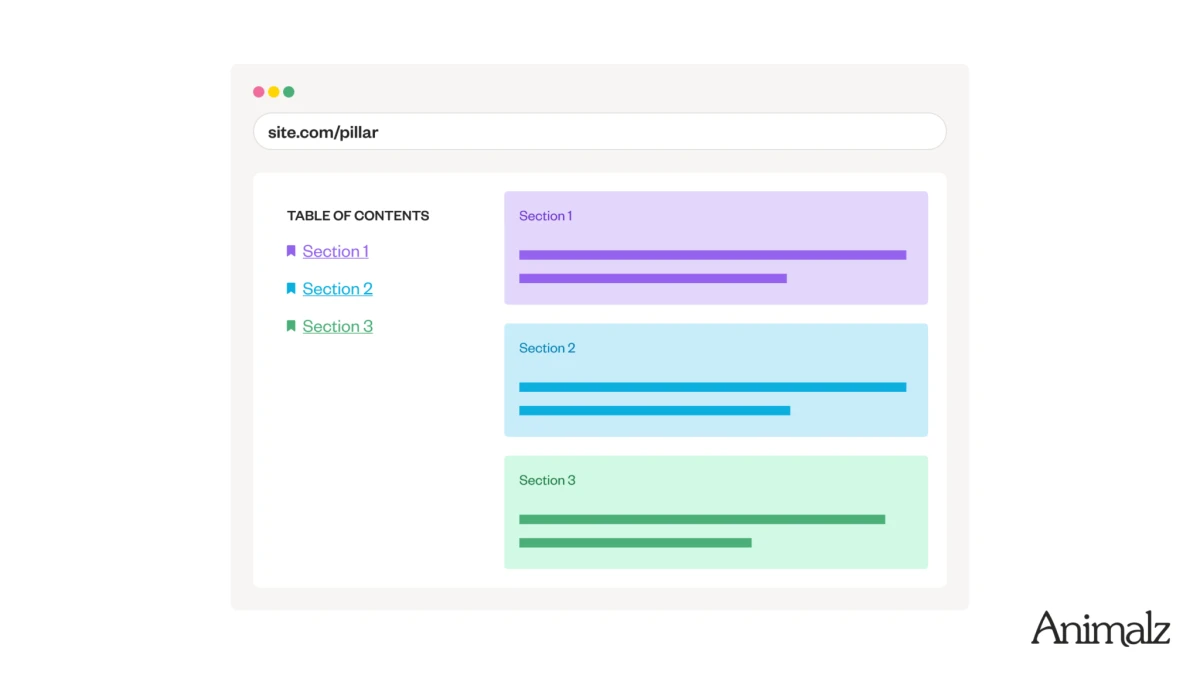
What it is: Pillar content is a single, comprehensive article that covers a topic exhaustively on one page.
How it works: Pillar content — unlike hub and spoke, which spreads content across multiple linked articles — is a long-form, thorough exploration of the subject. Think of it as merging all the elements of a hub and spoke into a single piece.
Pillar content conveys authority, and often attracts more backlinks and outperforms shorter content in conversions. And they’re best served with a table of contents that helps readers navigate the comprehensive coverage.
4. BLUF (Bottom Line Up Front)

What it is: BLUF is a military communications principle that dictates putting the most important information first.
How it works: Lead with your main point instead of building up to it. This approach respects your reader’s time and delivers value immediately.
An easy way to think about it is to begin with your conclusion, or the one thing you want readers to take away. Then readers know exactly what they’re getting and can decide whether to continue reading. It also helps reduce the cognitive load on your reader as it eliminates the need to piece together your argument from scattered clues.
BLUF works across all content types — blog posts, emails, and internal communications.
5. Content Maturity Model
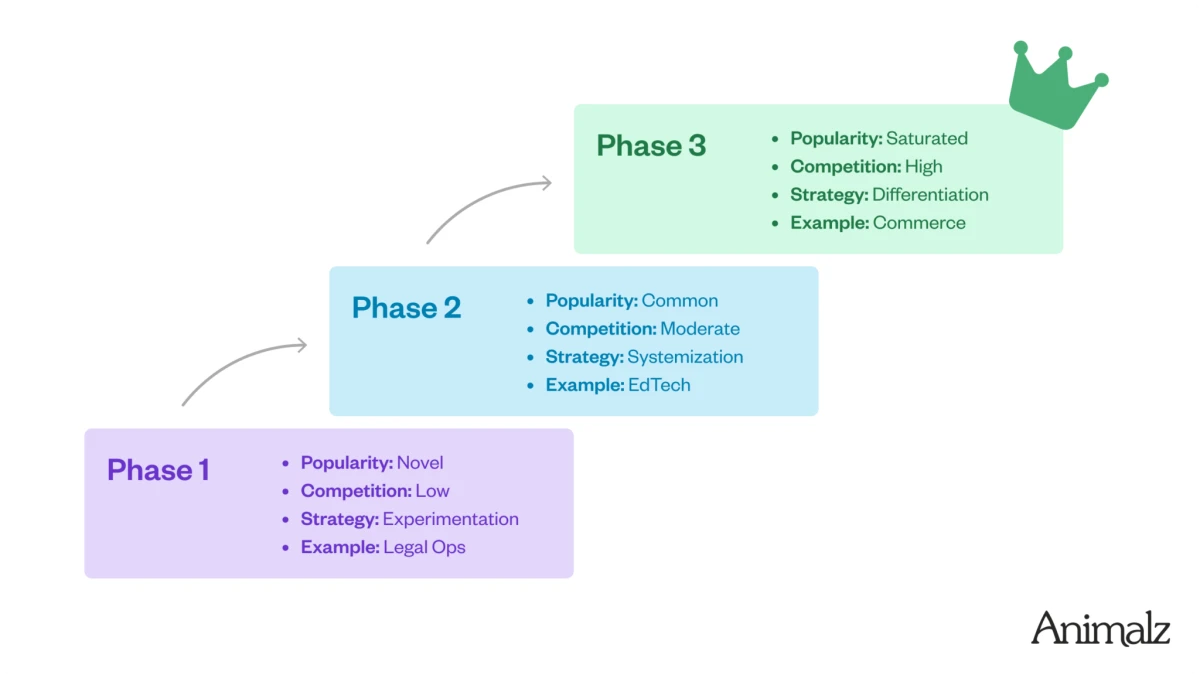
What it is: The Content Maturity Model is a framework that maps content strategy to your industry’s competitive landscape. It breaks content marketing into three stages — experimentation, systematization, and differentiation — based on how much competition you face.
How it works: Each stage reflects the approach you should take in your strategy:
experimental content that tests basic formats in wide-open markets
systematized content that targets keywords methodically as competition grows, or
differentiated content that finds unique angles to stand out in saturated industries.
The right content approach depends entirely on where your industry sits on this spectrum. In untapped markets, basic tactics work because there’s no competition. In crowded markets, those same tactics get buried under established players with years of backlinks and brand recognition.
6. High-Concept Content
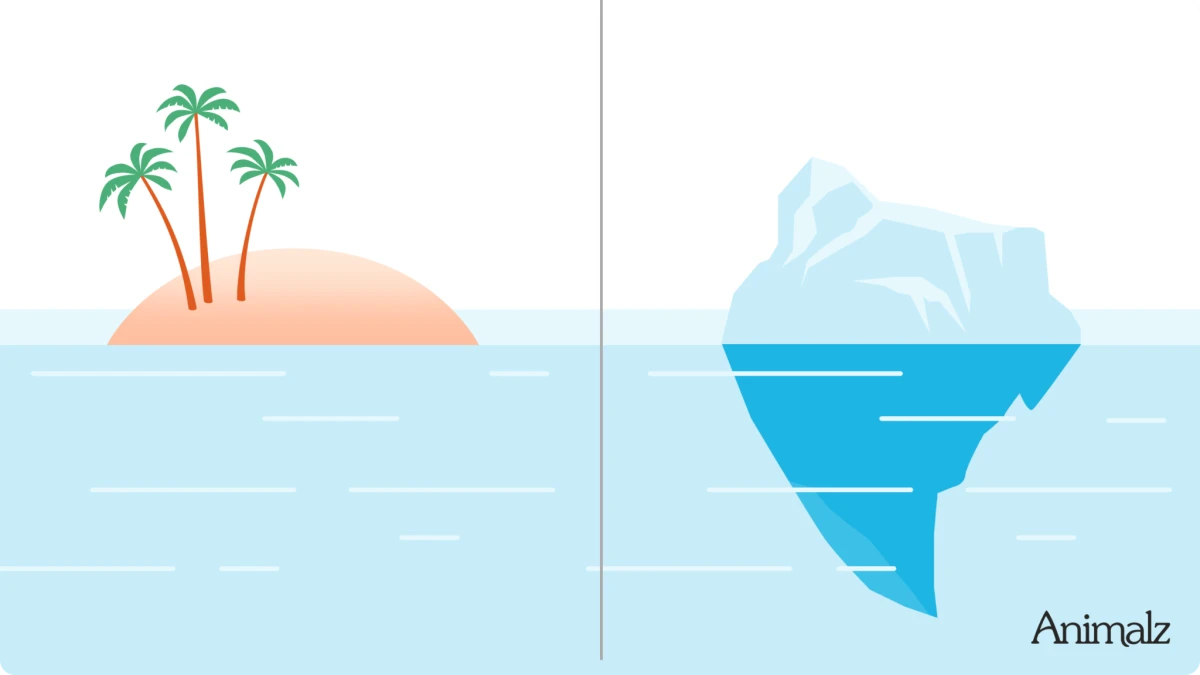
What it is: High-concept content is a framework borrowed from Hollywood that makes your value immediately clear from the title alone. I.e. Snakes on a Plane, we know what it’s about. The Window, we have no idea.
How it works: It breaks content into two types:
High-concept pieces that front-load their value like “We Analyzed 752,626 Facebook Ads, and Here’s What We Learned,” and
Low-concept pieces that bury their value behind generic titles like “The Ultimate Guide to Facebook Ads.”
High-concept content tells readers exactly what they’ll get, while low-concept content forces them to dig through paragraphs to find the payoff.
The high-concept approach works when your industry is saturated with copycat “ultimate guides” and listicles that all look the same (most of them these days).
7. Copycat Content
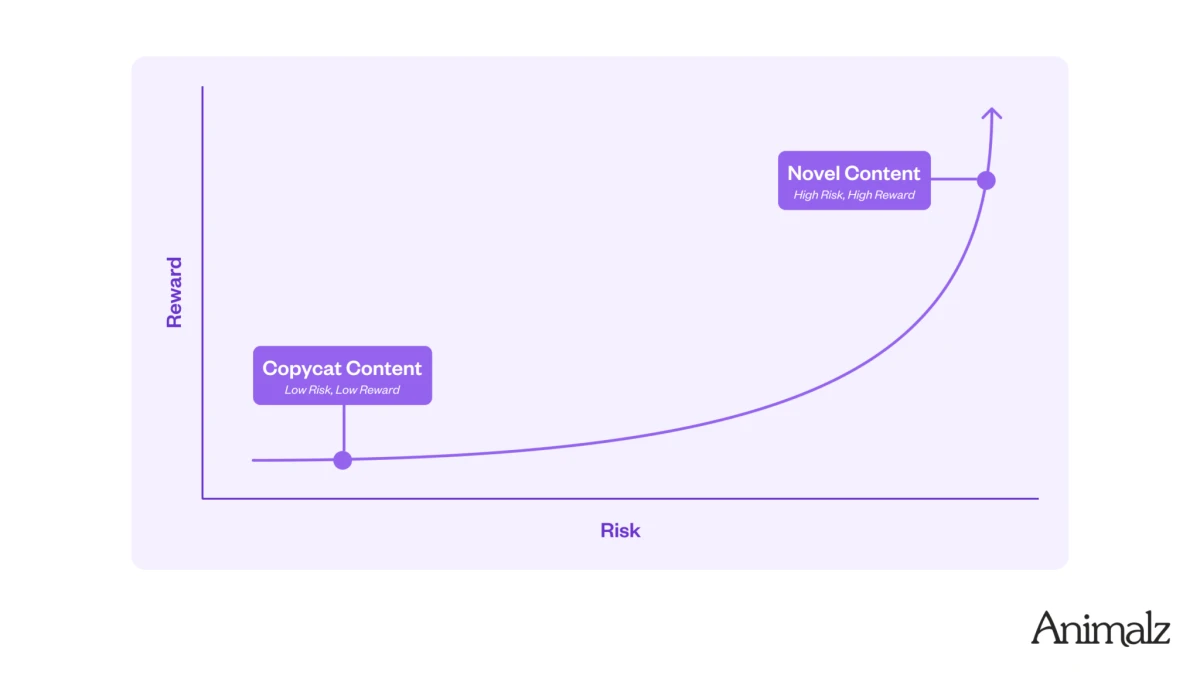
What it is: Copycat content, something to avoid, is the epidemic of identical-looking articles that dominate search results when companies over-rely on SEO tools to dictate their content.
It happens when keyword research tools analyze only existing articles, recommend the same headers and topics, then output consolidations of what already ranks. The result is intellectual plagiarism that feels identical even if it’s technically original. The framework helps identify when you’re falling into this trap and shows how to break free with unique angles.
How it works: The easiest way to avoid copycat content is to make an earnest effort to differentiate your content. Anchor articles in proprietary data, contrarian opinions, and personal experience instead of following SEO tool recommendations.
8. MECE
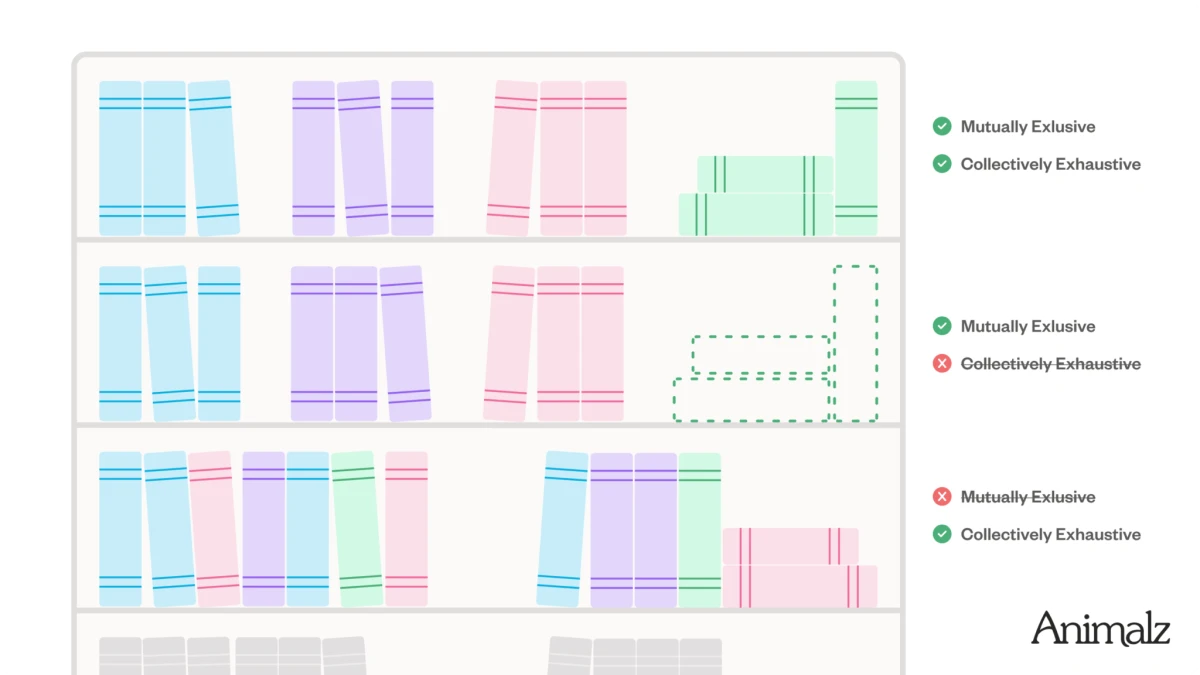
What it is: MECE stands for “mutually exclusive, collectively exhaustive.” It’s a management consulting framework — originally developed by McKinsey consultant Barbara Minto — that we applied to content marketing. The framework helps you identify whether your content covers everything it promises without overlap or gaps.
How it works: With MECE, your content meets two requirements: it’s collectively exhaustive (covers the full scope) and mutually exclusive (no overlapping sections).
Each section covers a distinct element of the parent topic without overlap, and together they comprehensively address the parent topic from start to finish.
9. Information Gain
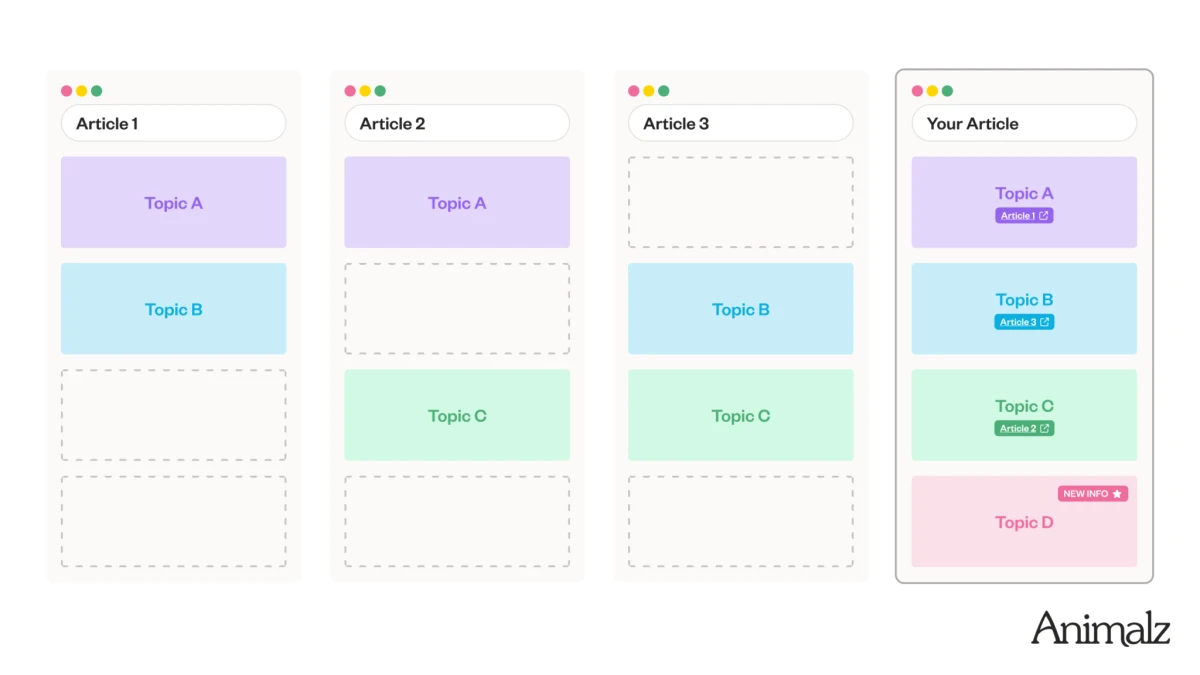
What it is: Information gain is a concept search engines employ that rewards content for being different, not just “better” than existing search results. The framework helps smaller companies compete against established players by bringing fresh perspectives instead of trying to out-skyscraper comprehensive guides.
The concept emerged from Google’s recognition that most search results contain identical information with minor variations. Once readers consume one article, they’ve effectively read them all, which hurts user engagement and limits discovery of genuinely helpful content.
How it works: Companies can leverage information gain by building on existing content rather than competing directly, like writing the “102 version” or “201 version” of someone’s “101 guide,” addressing unserved search intent, or challenging outdated beliefs with original research and personal experience.
10. Content Value Curve
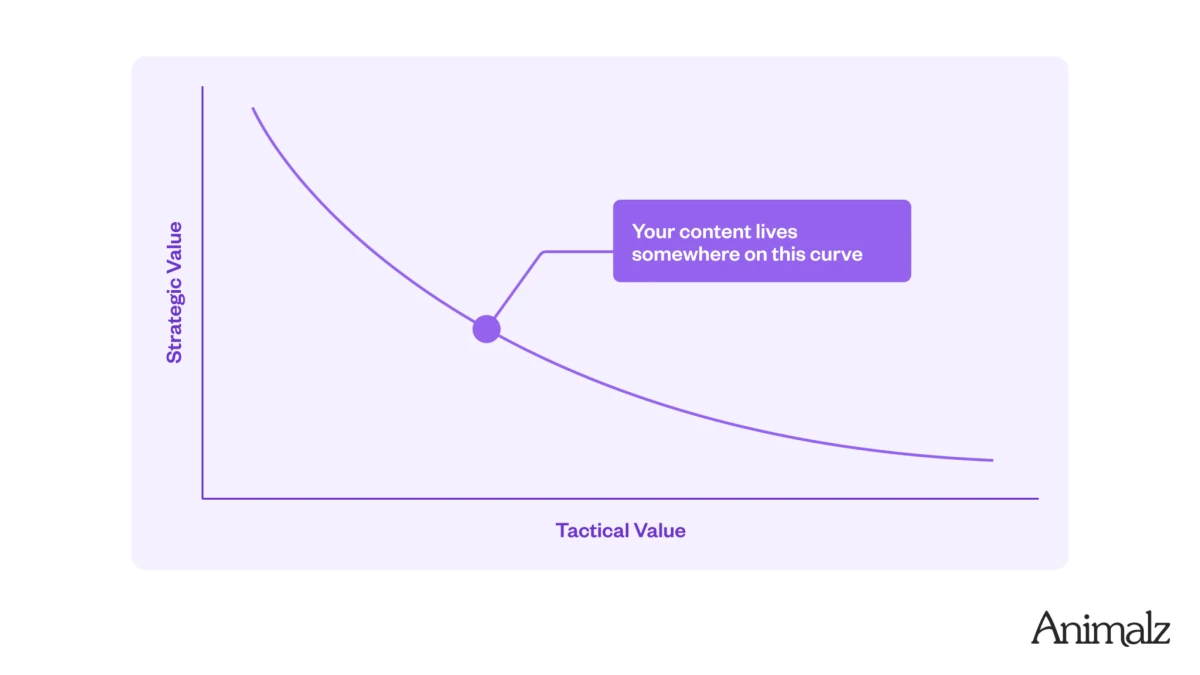
What it is: The Content Value Curve is a framework that maps the inverse relationship between tactical and strategic content value. It shows that content can help readers “do something” (tactical) or “think something” (strategic), but rarely both effectively — the more tactical value you add, the less strategic value you can provide, and vice versa. The framework helps you choose which type of value to prioritize based on your audience and goals.
How it works: This framework helps you identify what kind of content your topic should be without falling into the “soft” middle. Tactical and strategic content serve fundamentally different audiences with different needs.
Tactical readers want step-by-step instructions to solve immediate problems, while strategic readers need frameworks and first principles to guide decision-making.
11. Movement-First Content

What it is: Movement-first content is a marketing strategy (borrowed from the concept of marketing-first startups by serial founder David Cummings) that prioritizes building credibility with industry leaders before reaching for scale and distribution. “The primary goal of movement-first content is to inspire, not necessarily to inform.”
How it works: Focus your efforts on generating content with strong opinions. Establish authority and appeal to early adopters who become customers and advocates, then invest in informational content like SEO-optimized articles.
The framework recognizes an inverse relationship between impact and broad distribution in B2B content marketing. Content that resonates deeply with narrow audiences requires specific, opinionated insights, while content optimized for wide distribution gets watered down to appeal to everyone.
12. Distribution-First Strategy
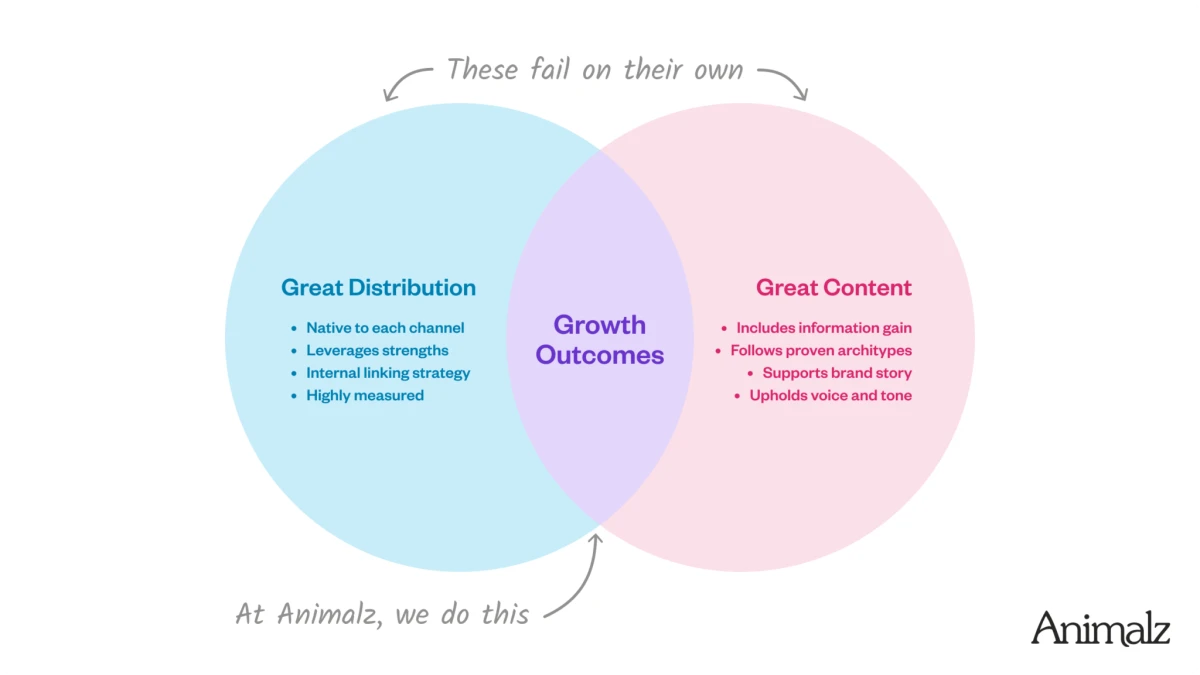
What it is: Distribution-first strategy is an approach that dictates you analyze all possible distribution channels to identify which have the biggest opportunities for reach, and where you should invest your resources.
How it works: The framework emerged as SEO became more competitive and expensive, forcing companies to diversify beyond “blog-driven” strategies. Distribution-first helps you identify overlooked channels with higher ROI potential instead of defaulting to SEO and hoping for traffic.
13. Content Decay and Refresh
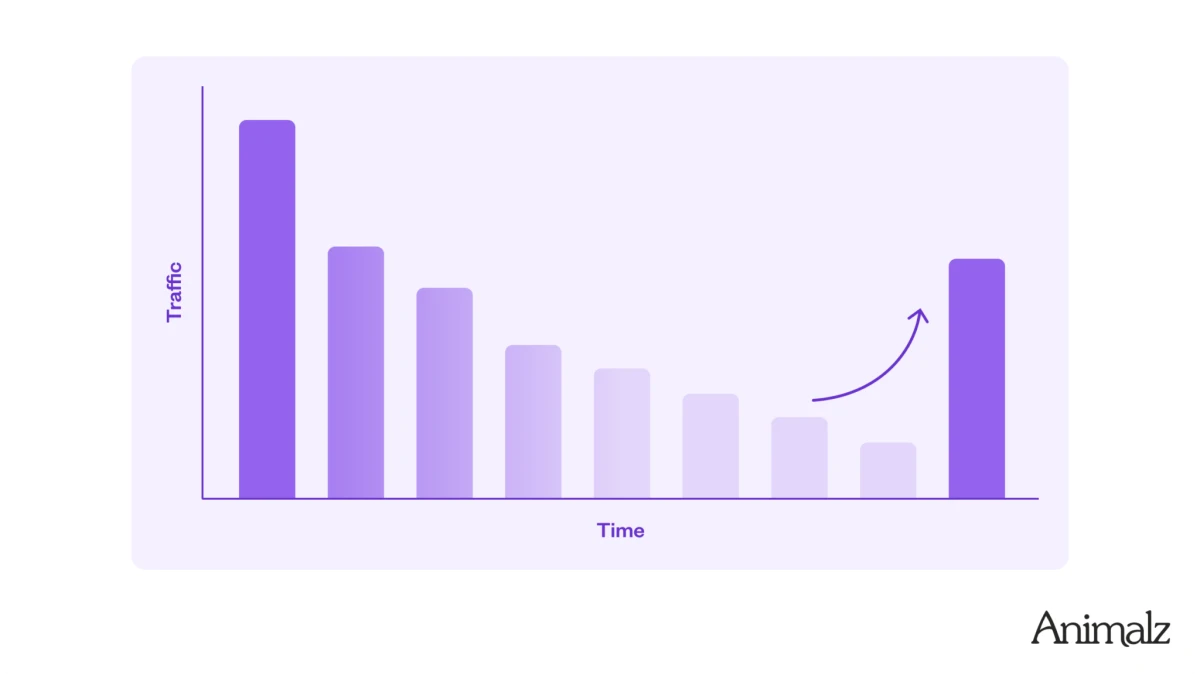
What it is: Content decay and refresh is an approach that identifies articles losing organic traffic over time and updates them to regain rankings and visitors.
How it works: Refreshing involves updating these declining articles with new data, improved optimization, or expanded coverage to restore their search performance.
We didn’t pioneer this approach, but we did make it easier with our free tool Revive. Revive analyzes 12 months of organic search traffic to identify sustained decline patterns, filtering out seasonal variations and temporary fluctuations. Companies using content refresh strategies typically see meaningful traffic improvements within 3-6 months, with some refreshed articles recovering 50-90% of their lost traffic.
14. Intent Gaps
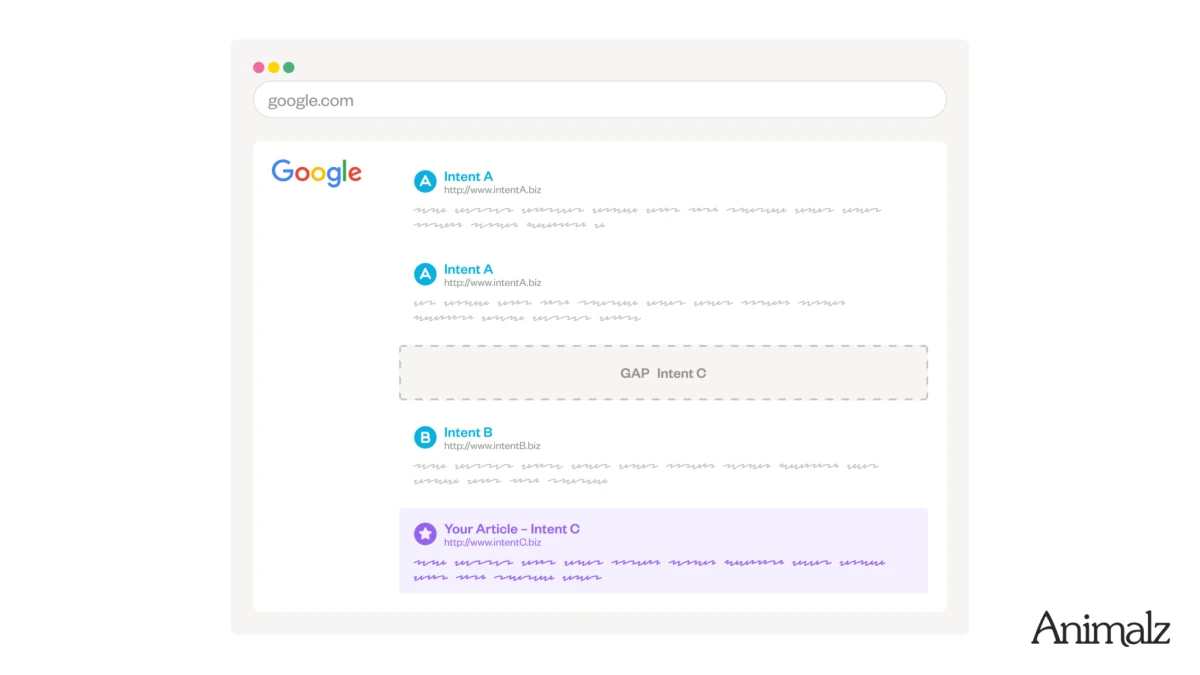
What they are: Intent gaps are missing search intents or unaddressed questions within existing search results that represent opportunities to rank for competitive keywords. The concept challenges the “Google knows best” fallacy— the assumption that current search results represent perfect content when they could be just the best of a bad bunch. Intent gaps occur because many keywords harbor dozens of different search intents, but Google can only surface a limited number of results that typically focus on one dominant angle.
How it works: The framework helps identify four types of gaps:
unserved intent where specific use cases aren’t represented
missing information that should logically be included
outdated beliefs that need correction
mistakes in Google’s comprehension of what searchers actually want.
Instead of copying existing results or abandoning competitive keywords, you should identify these gaps and create radically different content.
15. AI Visibility Pyramid

What it is: The AI Visibility Pyramid is a framework for optimizing content to appear in AI-powered search results from tools like ChatGPT, Gemini, and Google’s AI Overviews. It builds on traditional SEO fundamentals but adds new layers focused on how AI models select and cite sources when generating answers. The pyramid has three levels: SEO foundation (traditional optimization), AI-friendly content (citation-worthy assets), and credibility amplification (third-party mentions and reviews).
How it works: The framework emerged as AI search tools have begun supplementing or replacing traditional search, which create new visibility challenges for marketers. Traditional SEO remains important — AI tools often pull from search engine indexes, after all — but to gain consistent AI citations you need to understand how these models evaluate trust, authority, and relevance differently than search algorithms.
Companies using this approach create content that answers specific questions in BLUF format, then amplifying their credibility through strategic participation in Reddit discussions, industry forums, review sites, and digital PR efforts to increase the likelihood that AI models will cite their content as authoritative sources.
16. EVE (Educate-Validate-Empower)
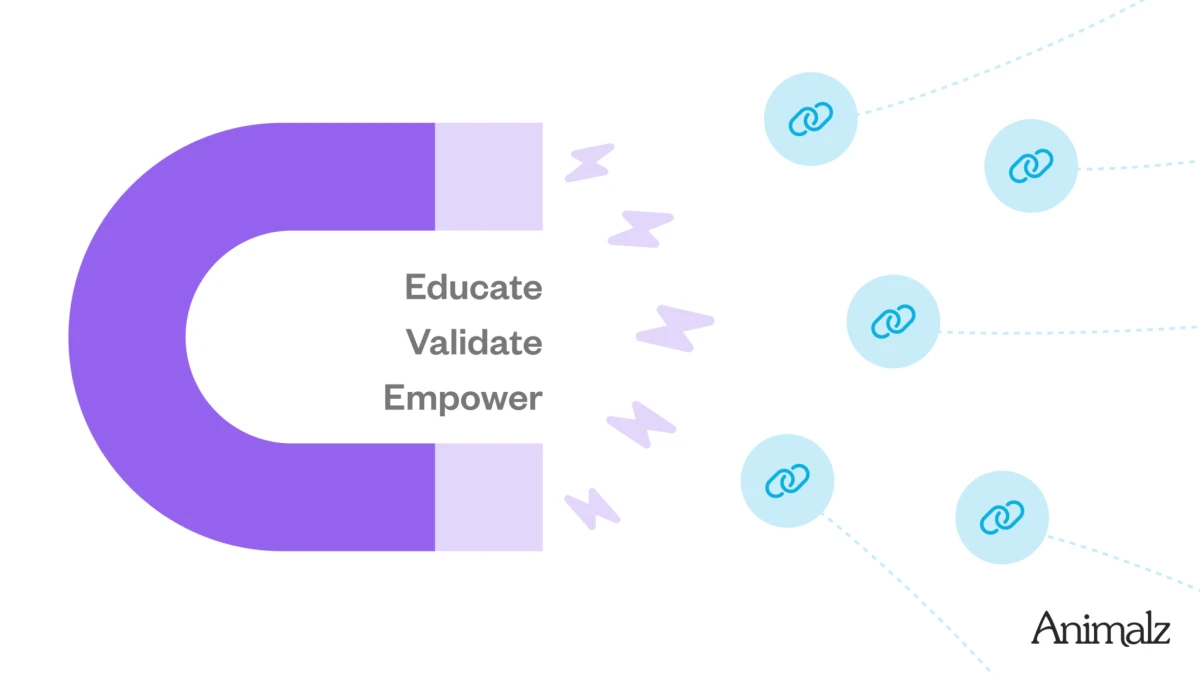
What it is: The EVE Framework is a link-building strategy that focuses on creating content that makes people feel Educated, Validated, and Empowered — the three core motivations that drive organic backlinking behavior.
How it works: Rather than chasing more manual, tactical link-building methods, the framework targets the psychological reasons why people choose to link to content.
Educational content like original research gets referenced for credible statistics.
Validation content like thought leadership and rankings makes writers feel smart for citing authoritative sources.
Empowerment content like free tools and templates saves other creators time and effort.
17. First and Second-Order Pain Points
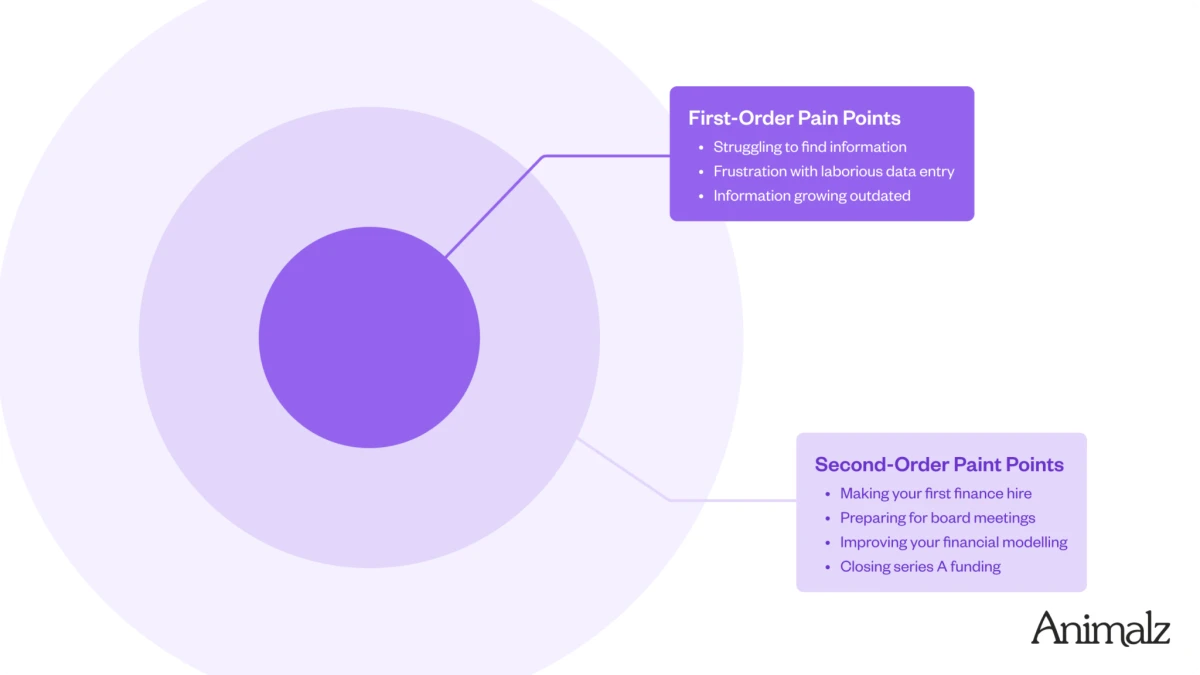
What it is: Second-order pain points are problems that are comorbid with the problems your product solves —occurring at the same time for the same people but not directly solved by your product.
How it works: Zoom out from immediate product problems to explore the bigger, broader environment in which they live. This opens up a much larger total addressable market for content topics when companies exhaust their obvious pain points.
An email marketing tool might have an article about ‘hiring your first marketing manager’ not because it solves hiring problems, but because businesses ready for sophisticated email campaigns are likely also scaling their marketing teams.
The 18th framework is yours to write
Most importantly, these 17 frameworks have survived because we’ve evolved with them.
The companies that succeed with content won’t be the ones who follow these frameworks to the letter. They’re the ones who understand them deeply enough to know when to deviate.
Take these frameworks. Test them. Break them. Rebuild them for your specific context. Use these as your working toolbox. But keep space for the framework you create as the landscape shifts again.
When you publish it, send it our way — we’ll be the first to test it.
